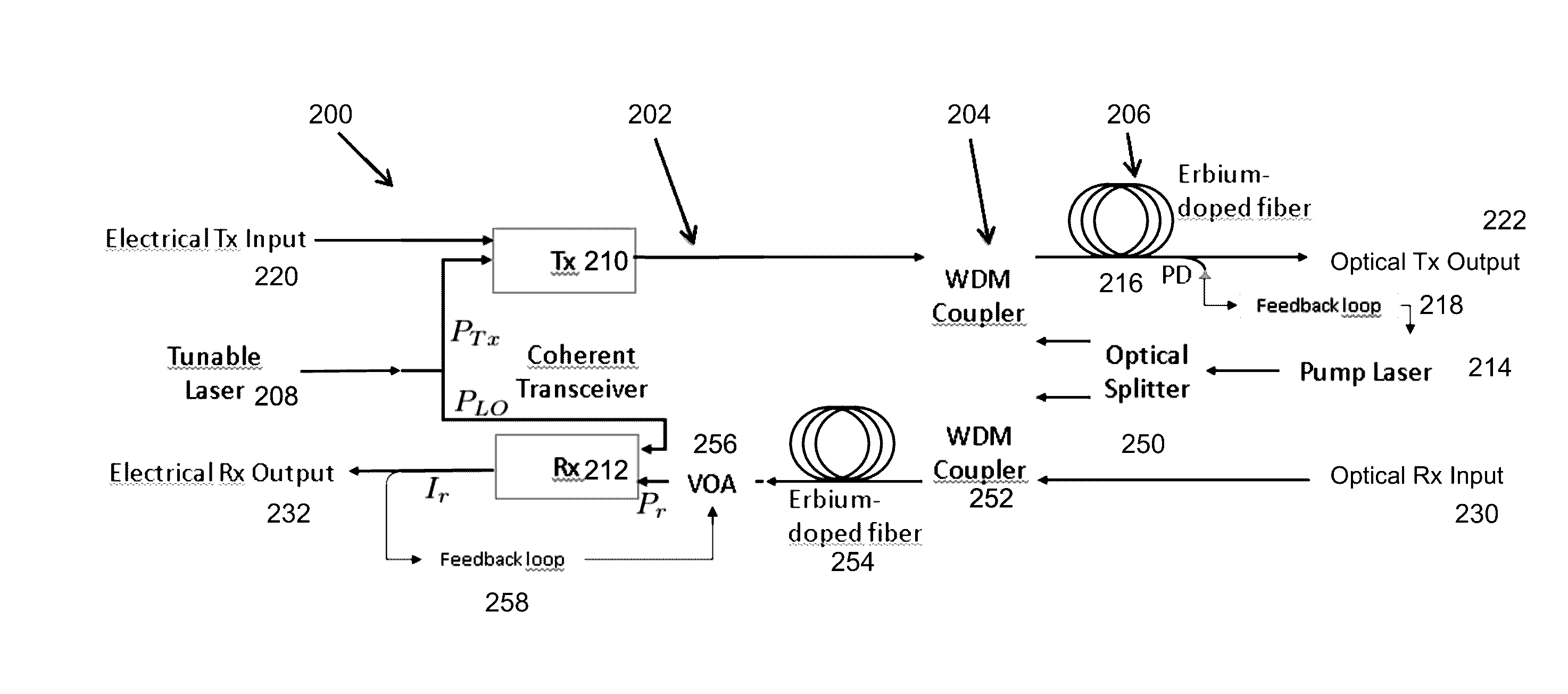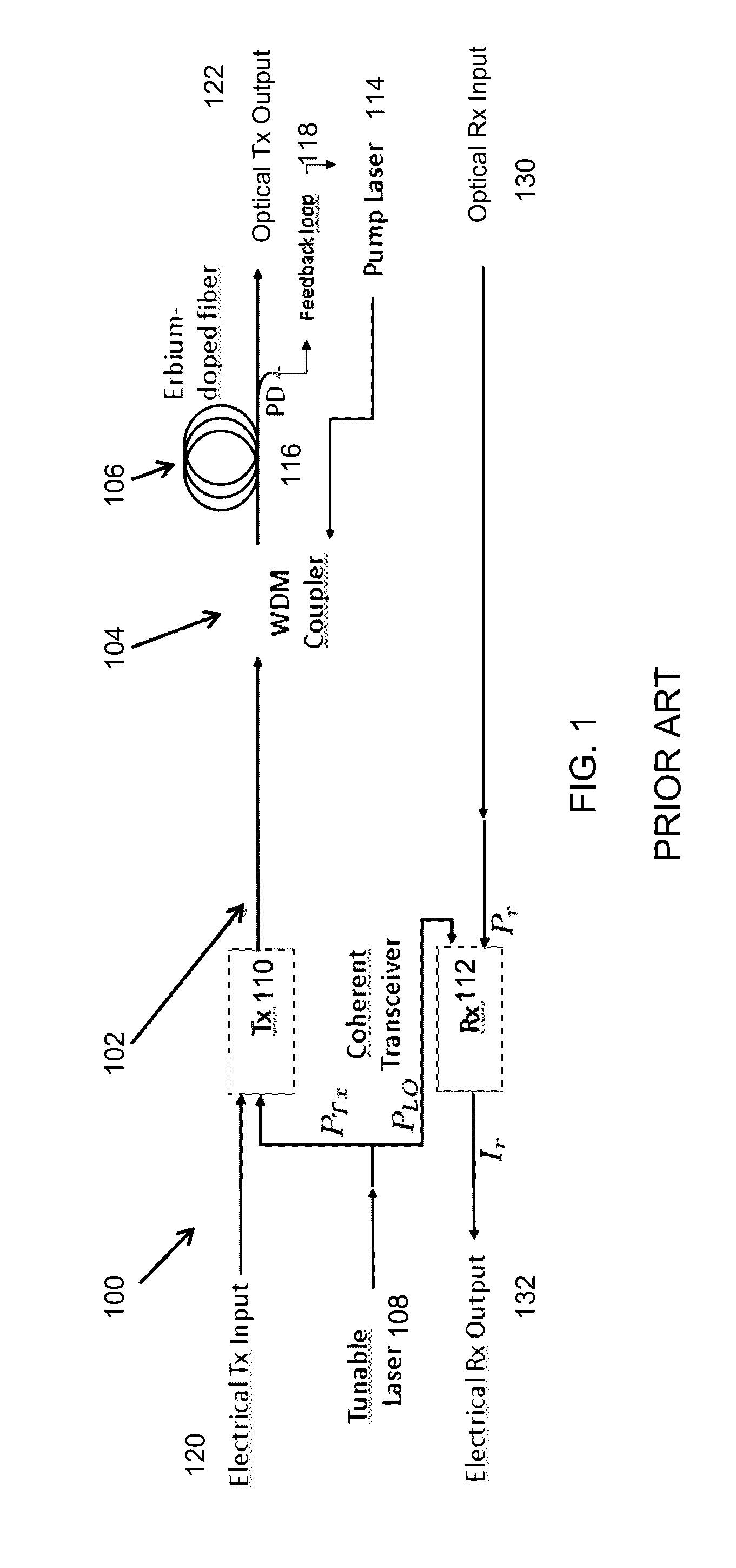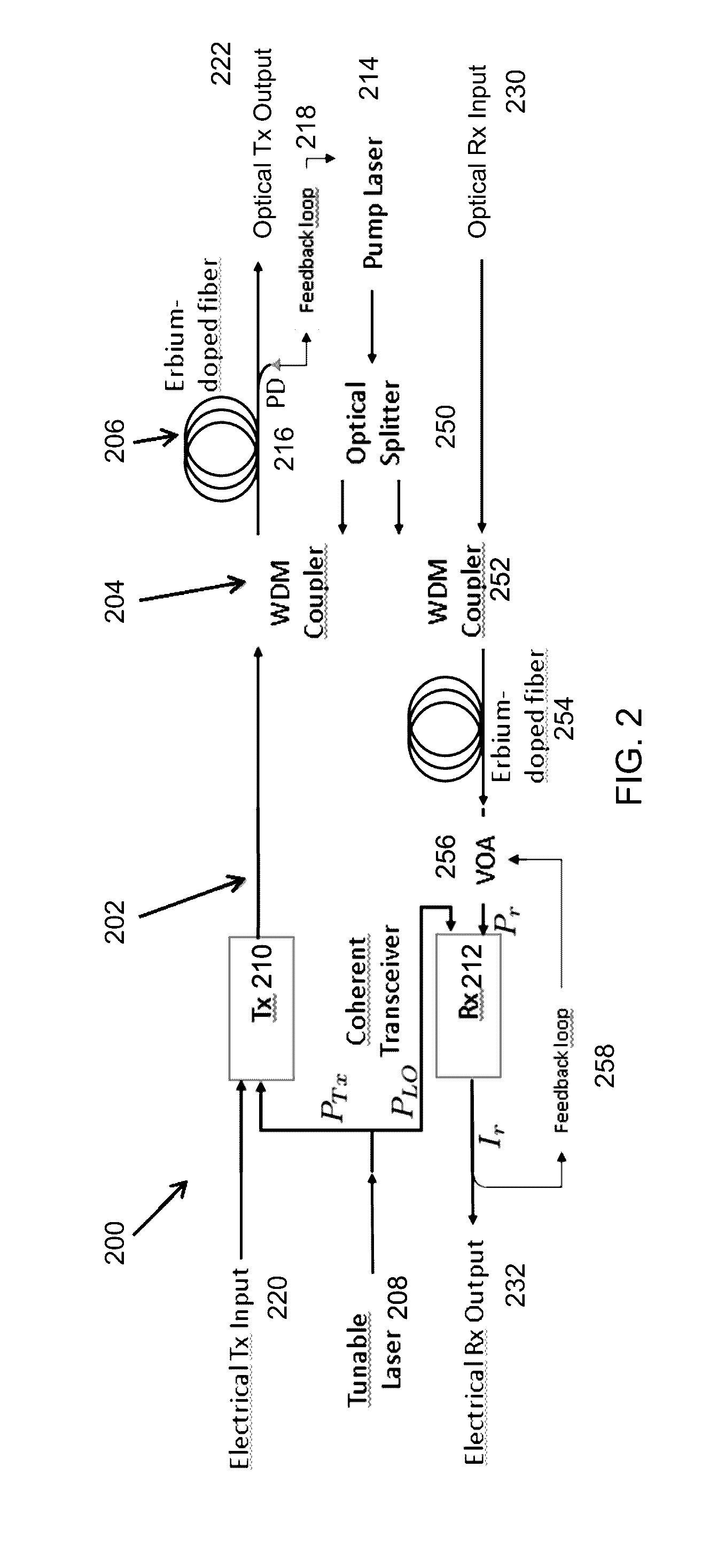Transmitter optical signal to noise ratio improvement through receiver amplification in single laser coherent systems
a technology of optical signal and receiver, applied in the field of optical communication system, can solve the problem of limited output tx optical signal to noise ratio (osnr) and achieve the effect of improving the optical signal to noise ratio
- Summary
- Abstract
- Description
- Claims
- Application Information
AI Technical Summary
Benefits of technology
Problems solved by technology
Method used
Image
Examples
example implementation
[0050]FIG. 2 is a schematic diagram of one embodiment of an apparatus having a single pump laser source for two amplification fiber coils (in the embodiment illustrated, the amplification fiber coils are Erbium-doped fiber amplifier coils) according to principles of the invention. The method of using a single pump laser source for two amplification fiber coils is also described. The required gain and output power in the Rx optical amplifier is much lower than in the Tx optical amplifier. Therefore, the optical splitter need only tap off a small fraction of the pump laser power for the Rx optical amplifier. In other embodiments, amplifiers other than EDFA amplifiers may be used.
[0051]As illustrated in FIG. 2 is a schematic block diagram 200 of a prior art coherent optical transceiver 202, in which in-line power monitor photodiodes and fiber optic splices are omitted. The pump laser 214 provides illumination to an optical splitter 250 which can split the illumination in desired propor...
PUM
 Login to View More
Login to View More Abstract
Description
Claims
Application Information
 Login to View More
Login to View More - R&D
- Intellectual Property
- Life Sciences
- Materials
- Tech Scout
- Unparalleled Data Quality
- Higher Quality Content
- 60% Fewer Hallucinations
Browse by: Latest US Patents, China's latest patents, Technical Efficacy Thesaurus, Application Domain, Technology Topic, Popular Technical Reports.
© 2025 PatSnap. All rights reserved.Legal|Privacy policy|Modern Slavery Act Transparency Statement|Sitemap|About US| Contact US: help@patsnap.com



